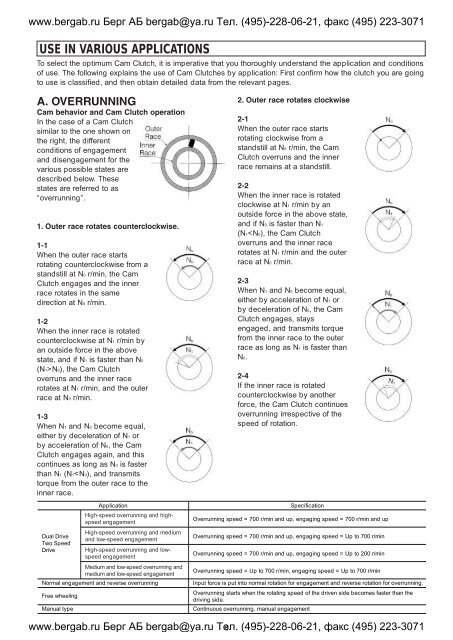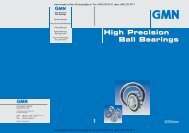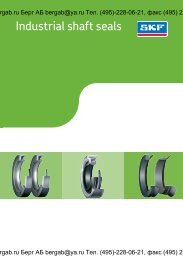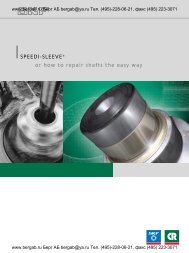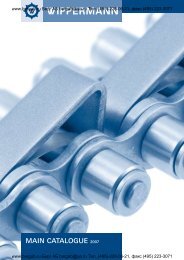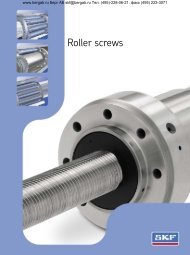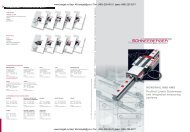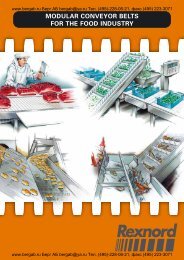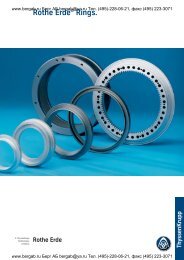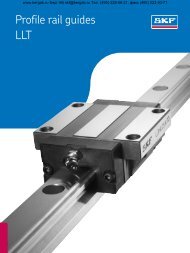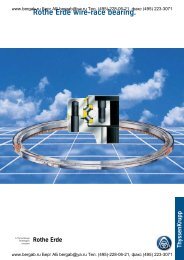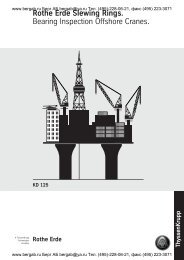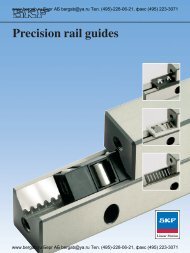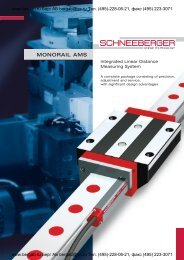TSUBAKI EMERSON CAM CLUTCH
TSUBAKI EMERSON CAM CLUTCH
TSUBAKI EMERSON CAM CLUTCH
Create successful ePaper yourself
Turn your PDF publications into a flip-book with our unique Google optimized e-Paper software.
www.bergab.ru Берг АБ bergab@ya.ru Тел. (495)-228-06-21, факс (495) 223-3071<br />
USE IN VARIOUS APPLICATIONS<br />
To select the optimum Cam Clutch, it is imperative that you thoroughly understand the application and conditions<br />
of use. The following explains the use of Cam Clutches by application: First confirm how the clutch you are going<br />
to use is classified, and then obtain detailed data from the relevant pages.<br />
A. OVERRUNNING<br />
Cam behavior and Cam Clutch operation<br />
In the case of a Cam Clutch<br />
similar to the one shown on<br />
the right, the different<br />
conditions of engagement<br />
and disengagement for the<br />
various possible states are<br />
described below. These<br />
states are referred to as<br />
“overrunning”.<br />
1. Outer race rotates counterclockwise.<br />
1-1<br />
When the outer race starts<br />
rotating counterclockwise from a<br />
standstill at N0 r/min, the Cam<br />
Clutch engages and the inner<br />
race rotates in the same<br />
direction at N0 r/min.<br />
1-2<br />
When the inner race is rotated<br />
counterclockwise at N1 r/min by<br />
an outside force in the above<br />
state, and if N1 is faster than N0<br />
(N1>N0), the Cam Clutch<br />
overruns and the inner race<br />
rotates at N1 r/min, and the outer<br />
race at N0 r/min.<br />
1-3<br />
When N1 and N0 become equal,<br />
either by deceleration of N1 or<br />
by acceleration of N0, the Cam<br />
Clutch engages again, and this<br />
continues as long as N0 is faster<br />
than N1 (N1


